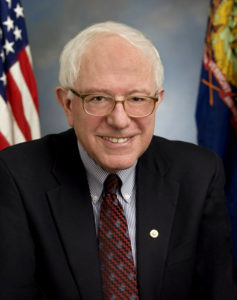On September 1, 2015 a lawsuit against Uber Technologies Inc. asserting that Uber drivers are employees of the corporation, not independent contractors, was granted class action status by District Court Judge Edward Chen. The ruling came over two years after the class action motion was filed in August 2013.
This is not the first lawsuit against Uber for claiming that its drivers are not employees. On June 16, 2015, a California Superior Court Judge ruled that Barbara Berwick, a former Uber driver, had been an employee, not an independent contractor, during the period that she was driving for the company. As a result, Uber was required to pay Ms. Berwick $4,152.20 as reimbursement for toll fees, driving citations received while driving customers, and wages. However, the ruling on Ms. Berwick’s case did not set a precedent for other drivers as she was solely representing herself in the lawsuit.
The current lawsuit against Uber is different in that its first motion was to make it a class action lawsuit. Gaining class action status is a huge step forward for the lawsuit as the final ruling on the lawsuit will apply to all Uber drivers in California, not just the three plaintiffs. Uber argued that because of the arbitration clause included in Uber’s contract with its drivers, only 15,000 of Uber’s 160,000 drivers in California could be included in the lawsuit. However, on December 9, 2015, Judge Chen ruled that the arbitration clause was unenforceable and “potentially misleading, coercive, and threatens to interfere with the rights of class members.” As a result, all 160,000 drivers will be included in the class action lawsuit.
Currently, Uber’s drivers are considered to be independent contractors of the company. But, on the Internal Revenue Service’s website, the IRS states that “You are not an independent contractor if you perform services that can be controlled by an employer (what will be done and how it will be done). This applies even if you are given freedom of action. What matters is that the employer has the legal right to control the details of how the services are performed.” The three Uber drivers argue that although they have control over when they work and how much they work, at the end of the day Uber determines how much the customers pay and how much of that the drivers receive. Furthermore, Uber requires drivers to maintain a rating of 4.6 stars, based off customer feedback and can fire drivers for falling below that standard.
If Uber drivers are found to be employees rather than independent contractors, the financial repercussions for the company would be huge. In addition to paying back wages as they had to in Ms. Berwick’s case, Uber would have to pay for their drivers’ expenses including gas and tolls. Uber would also have to pay their drivers at least minimum wage, which in California is $9.00, but in some areas, such as San Francisco where the minimum wage is $12.25, can be much higher.

While Uber promises potential drivers that they can make up to $25/ hour driving for the company, this is often not the case. Takele Gobena, an Uber driver profiled by the Huffington Post in September 2015, said that after paying for gas and insurance he makes only $2.64/hour. A second Uber driver, who asked to remain anonymous, told The Paper Tiger that, “Driving Uber is luck.” Much of this luck depends on Uber’s “surges,” when rates increase in certain areas due to high demand. One day, a driver might find themselves in the middle of a surge zone and get a lucrative ride. However, the next day he could spend half an hour driving to a surge area only to find that once he arrives there the surge has ended.
More importantly, Uber would have to provide health insurance for its drivers, which could prove costly. Re/code, a tech-oriented website, estimates that if Uber drivers are found to be employees, the company would have to spend an extra $208.7 million each year. For a company that is estimated to make $10.8 billion in 2015 this may not seem like a lot, but experts still predict that an increase in costs would likely lead to Uber taking a larger cut from driver’s wages; currently Uber drivers take 20% from each trip. Furthermore, according to the online magazine Slate, Uber reports that 81% of the company’s drivers work part-time with 50% working fewer than 15 hours a week. If Uber were to treat their drivers like employees and provide health insurance for those that work over a certain number of hours, it could force out those drivers that don’t work regular hours for the company.
Flexible hours is what draws many of Uber’s drivers to the company. For one driver, a single father who has driven for Uber for almost two years and asked to remain anonymous, Uber has allowed him to earn a paycheck while still being able to pick his sons up from school everyday. While the driver noted that he’d be in favor of having a drivers’ union or receiving benefits from Uber, he feels that the current system fits his needs. “Overall I’ve had a really positive experience with the riders and at the end of the day, I haven’t had to change anything. You just want to feel like there’s a purpose and meaning to what you’re doing.”






